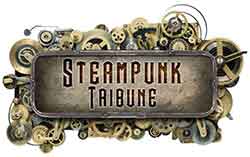Shibden Hall exterior
As I was building the tower, I was at a bit of a loss as to what to call it. Naming it the “clocktower” was bland and indicated no character or creativity, so after a bit of reaserch, I found a small section in a reference book that has provided a bit of inspiration toward a name…
—
Many of the great English novels take place or develop in houses with grand-sounding names Thrushcross Grange, Thronfield Hall, Ullathorne Court, to name a few. In some cases, a residence even gave its name to a novel, notably Mansfield Park, Bleak House, and of course, Northanger Abbey and Wildfell Hall as well. Examinations suggest that some of the generic residence names reveal something about the nature of the dwelling, those that lived there, or both.
Thrushcross Grange exterior details
Court A residence constructed around some kind of courtyard. So, at any rate, Trollope tells us in his description in Barchester Towers of Ullathorne Court, which he says, “properly so called; for the house itself formed two sides of a quadrangle, which was completed on the other two sides by a wall about twenty feet high.” Originally, such buildings were constructed for defensive purposes, with windows facing inwards, so life within the dwelling could proceed in the courtyard even in the midst of an armed attack.
Grange A residence like Thrushcross Grange of the Lintons in Wuthering Heights or Mr. Brookes Tipton Grange in Middlemarch was so named because it was a grain storehouse or granary, sometimes attached to a large monastery. By the 1800s, the term designated isolated farmsteads, too, a description that would fit Thrushcross Grange and also Moor Home, the “sequestered home” of St. John Rivers terms “this crumbling grange,” where Jane Eyre stumbles upon her cousins.
Sudsbury Hall fronal view
Hall As in Mr. Rochesters Thornfield Hall in Jane Eyre or Sir James Chetthams Freshitt Hall in Middlemarch. The word “hall” in the name of a dwelling meant that the house had centered on a great hall for entertainment, dining, and ceremonial living on a grand scale, as in feudal times. The term thus connoted both a certain grandeur (“a small, humble place,” a servant describes her cousins ancestral home to Jane Eyre, “naught to compare wi Mr. Olivers grand hall down i’ Morton Vale”) and the sort of ancient architecture likely to be associated with an old, august family. Vavasor Hall in Can You Forgive Her? belongs to “a family so old that no one knew which had first taken the ancient titular name of some old Saxon landowner the parish or the man.”
Bleak House and surrounding grounds
House There is, of course, Bleak House and Netherfield House, which Mr. Bingley rents at the outset of Pride and Prejudice and which occasions all the events that follow. The coming into use of the term “house” reflects a period when residential comfort was increasingly of concern and the period of naming things “castle”, “abbey”, or “manor” was long past. Moreover, it is interesting that neither Bingley nor Mr. Rochester are titled.
Manor The dwelling to which Mr. Rochester withdraws when Jane Eyre leaves him and Thornfield Hall burns is Ferndean Manor. The term “manor” implied a dwelling inhabited by a lord of the manor whose tenants lived on and worked the surrounding land. Obviously suggestive of a rather grand social status as well as a lineage dating back to Norman times, when the manorial system originated. In Tess, the country home of her ersatz dUrberville relatives “was not a manorial home in the ordinary sense, with field, and pastures, and a grumbling farmer, out of whom the owner had to squeeze an income for himself and his family by hook or by crook.” Thornfield Hall was in fact probably more of a manor than isolated Ferndean Manor; Jane Eyre describes it as a “gentlemans manor-house” at one point. Characteristically, a manor house was often the dominant architectural feature of the local village, which was evidently the case at Thornfield. “A little hamlet, whose roofs were blent with trees, straggled up the side of one of those little hills; the church of the district stood nearer Thornfield; its old tower-top looked over a knoll between the house and gates”.
Park As in Mansfield Park. Originally, a park was an area which the king permitted a large landowner to enclose for the sake of chasing down deer. Park came to mean a closed-in area, often landscaped with trees and lawn to present a pleasing and aesthetically appropriate picture. Both Mansfield Park and the park belonging to Sir Leicester Dedlock in Bleak House are the property of baronets, and having a park certainly connoted gentlemanly status; a lager one is attached to Thrushcross Grange. It advertised that you had both the means to withdraw otherwise productive land from cultivation for purely esthetic appreciation and the leisure time to enjoy it.
Inside Shibden Hall
One should not conclude that every park at one time had been the result of a special grant from the king or that each manor was the remnant of a feudal estate. Buying land and blending in with the landed gentry, after all, was the chief means of advancing into the upper echelons of English society in the 1800s. There were no doubt innumerable parks, halls, and manors whose existence dated from no earlier than the contractors men had first begun laying the foundations for some new magnates country estate.
Also, as the case of Thornsfield Hall suggests, one dwelling could combine the features of several different types of residence. Mr. Bingleys residence in Pride and Prejudice, for example, is referred to as different times as Netherfield House and Netherfield Park. Partly this was an estate or house might have multiple architectural and social features, and it was also because, depending on ones point of view, the same dwelling was notable either for its social-political function i.e., a manor house that embodied social and political dominion, or for an archtictural characteristic, such as a large hall or a big, central court.
Ref: Pool, D., (1993). What Jane Austen Ate and Charles Dickens Knew, pp.194-196. Simon & Shuster, Inc., New York: New York.
—
The English influence on Steampunk cannot be understated – though there are are plenty of other avenues for the genre (e.g. the American West), the tradtional source has been the Victorian era. That being said, a creative name to a building would add color to any avatar’s background (I feel). Hopefully, this piece might be a springboard of sorts away from the common titles for abodes.



